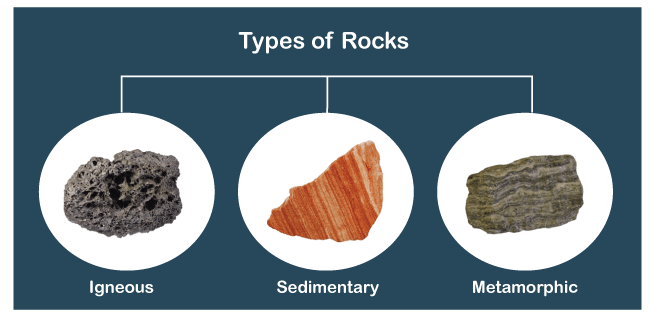Essential Element: EE.MS-ESS2-1
This is NOT a DLM tested standard.
Target Level: Use a model to describe the change within the rock cycle between igneous, metamorphic, and sedimentary rock.
Precursor Level: Use a model to describe the change from igneous to sedimentary rock.
Initial Level: Identify the process that forms igneous rock (e.g., volcanoes).
Precursor Level: Use a model to describe the change from igneous to sedimentary rock.
Initial Level: Identify the process that forms igneous rock (e.g., volcanoes).
Work in progress...
https://static.javatpoint.com/blog/images/types-of-rocks.png
Websites for Learning and Resources
https://www.nationalgeographic.org/encyclopedia/igneous-rocks/
www.education.com/workbook/dig-it-rocks-soil-workbook/
www.education.com/workbook/dig-it-rocks-soil-workbook/
Geography 21 Rocks, an interactive worksheet by LilScholarTeacher
liveworksheets.com
liveworksheets.com
Uses of minerals, an interactive worksheet by Mouza22
liveworksheets.com
liveworksheets.com
Types of rocks, an interactive worksheet by mmilrak
liveworksheets.com
liveworksheets.com
Rocks 2, an interactive worksheet by budifebrianto
liveworksheets.com
liveworksheets.com
Rocks, an interactive worksheet by arlenecam
liveworksheets.com
liveworksheets.com
Sorting Rocks, an interactive worksheet by hleitzke
liveworksheets.com
liveworksheets.com
Essential Element: EE.MS-ESS2-2
Target Level: Explain how geoscience processes that occur daily (e.g.,wind, rain, runoff) slowly change the surface of Earth, while catastrophic events (e.g., earthquakes, tornadoes, floods) can quickly change the surface of Earth.
Precursor Level: Identify geoscience processes (e.g., wind, rain, runoff) that have an impact on landforms (e.g., landslides, erosion such as gullies).
Initial Level: Identify differences in weather conditions from day to day.
Precursor Level: Identify geoscience processes (e.g., wind, rain, runoff) that have an impact on landforms (e.g., landslides, erosion such as gullies).
Initial Level: Identify differences in weather conditions from day to day.
Essential Element: EE.MS-ESS2-6
Target Level: Interpret basic weather information (e.g., radar, map) to make predictions about future conditions (e.g., precipitation, temperature, wind).
Precursor Level: Interpret basic weather information (e.g., radar, map) to compare weather conditions (either over several days at the same location or different locations on the same day).
Initial Level: Interpret basic weather information (e.g., radar, map) to identify weather conditions.
Precursor Level: Interpret basic weather information (e.g., radar, map) to compare weather conditions (either over several days at the same location or different locations on the same day).
Initial Level: Interpret basic weather information (e.g., radar, map) to identify weather conditions.
Reading Resources:

